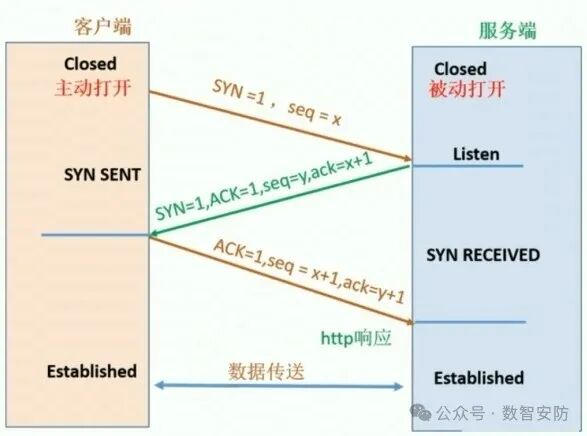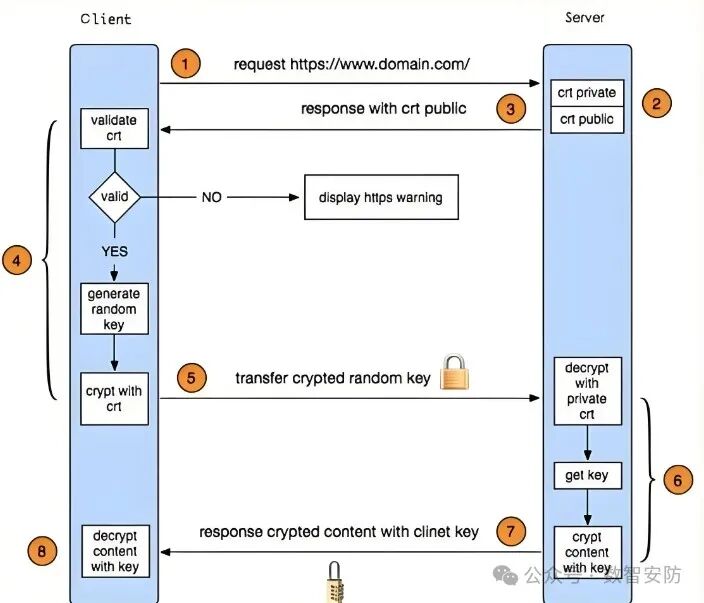When you enter a URL in your browser to search for information, have you ever noticed whether it starts with “http” or “https”?
The difference of an ‘S’ signifies a world of difference in terms of network security. This article delves into the distinctions between HTTP and HTTPS.
1. HTTP

HTTP, or HyperText Transfer Protocol, was born in 1989 and is the most widely used network protocol on the internet, primarily used for transferring hypertext from web servers to local browsers for web browsing and information retrieval.
To illustrate: HTTP is like a transparent courier, traversing the “streets and alleys” of the network. All data it transmits is unencrypted and in plain text: whether it’s your username and password when logging into a website or your personal address and credit card information when shopping online, during the transmission via HTTP, these details are laid bare for anyone to see. If malicious actors intercept this data during transmission, they can easily obtain your private information, posing a significant threat to your personal property and information security.
2. HTTPS

To address the security shortcomings of HTTP, the SSL protocol was developed. SSL (Secure Sockets Layer) provides a robust shell for HTTP, encrypting the data transmitted via the HTTP protocol.
The HTTPS protocol is a secure transmission channel constructed from both SSL and HTTP protocols. After sending relevant content, only the recipient with the corresponding “key” can unlock and read the contents. Additionally, HTTPS has authentication capabilities, allowing verification of the server’s identity to ensure that the website you are visiting is genuine and trustworthy.
For example, in online payments, when you make a purchase on an e-commerce platform, the HTTPS protocol encrypts the payment information, transforming your credit card number and payment password into a string of garbled text for transmission. Even if a hacker intercepts this data, they cannot access the real information without the decryption key. When you access the payment page, HTTPS verifies the identity of the website, preventing you from falling into a counterfeit payment page, thus ensuring your payment security.
3. Specific Differences Between HTTP and HTTPS
(1) Certificate Aspect
The HTTP protocol does not require a certificate during transmission and can freely transmit information over the network.
In contrast, the HTTPS protocol requires a certificate obtained from a CA (Certificate Authority), which conducts a strict review of the website applying for the certificate to confirm its authenticity and legality before issuing it.
Of course, obtaining a CA certificate has certain thresholds.
While there are free certificates available, they are very limited and may have certain restrictions in terms of security and functionality.
If a website seeks higher levels of security and trust, it must purchase a paid certificate from a CA. Paid certificates can provide more information and higher credibility. Acquiring a CA certificate not only incurs costs but also requires time and effort to complete the application and configuration process.
(2) Security Aspect

This is the core difference between HTTP and HTTPS.HTTP is a plaintext transmission protocol, meaning that information is transmitted without any encryption measures, akin to running naked on the street; anyone who wants to see it can.
HTTPS employs SSL encryption transmission protocol, which encrypts data in layers, providing a protective shell around the data during transmission. Even if intercepted, hackers find it difficult to decipher the content.
For instance, when logging into a website:
Using the HTTP protocol, your username and password are transmitted in plain text over the network, making it easy for anyone listening in to capture your information and log into your account.
Using the HTTPS protocol, your username and password are encrypted into a complex code for transmission, which only the target server can decrypt and verify, significantly enhancing login security.
(3) Connection Method and Port Aspect
HTTP and HTTPS use completely different connection methods, and thus different ports. Ports serve as “house numbers” in the network world, with different protocols transmitting and receiving data through different ports.
HTTP uses port 80 by default;
while HTTPS uses port 443 by default;
Port 80 is the “exclusive house number” for the HTTP protocol. When you access a website starting with “http://”, the browser connects to the website server via port 80 to transmit data.
Port 443 is the “exclusive house number” for the HTTPS protocol. When you access a website starting with “https://”, the browser establishes an encrypted connection with the server via port 443, ensuring the security of data transmission.
Although HTTP and HTTPS differ by just one letter, they have fundamental differences in terms of security, connection methods, and more.
With the increasing awareness of network security, the application of HTTPS is becoming more widespread. Nowadays, most legitimate websites, especially those involving user privacy and important data, such as bank websites, e-commerce platforms, and social media, have fully adopted the HTTPS protocol. This is an inevitable trend and an important measure to enhance user experience and increase website competitiveness.
—————–END——————-
This concludes the article.
Follow the public account below for more technical resources.

Disclaimer: Quality content is valuable when shared with everyone. Some content is sourced from the internet; if there are any infringements, please inform us, and we will address it promptly. Cooperation and communication: 18560233830